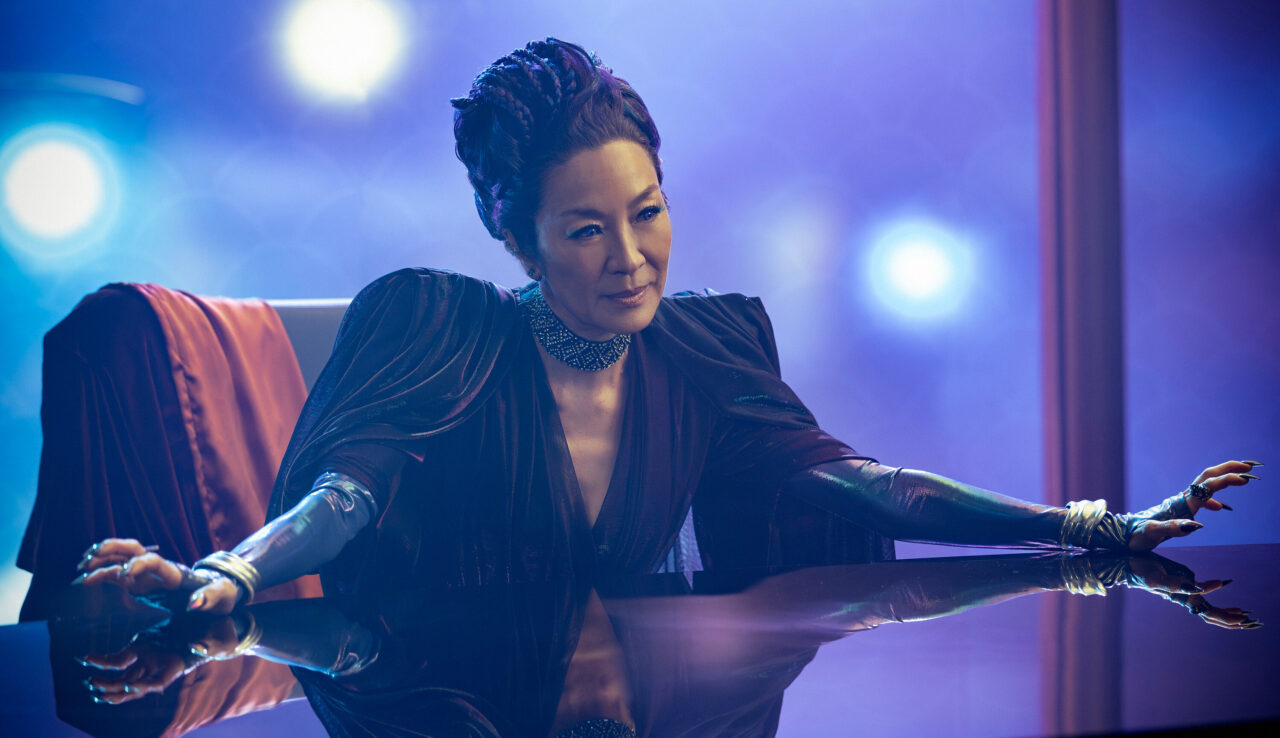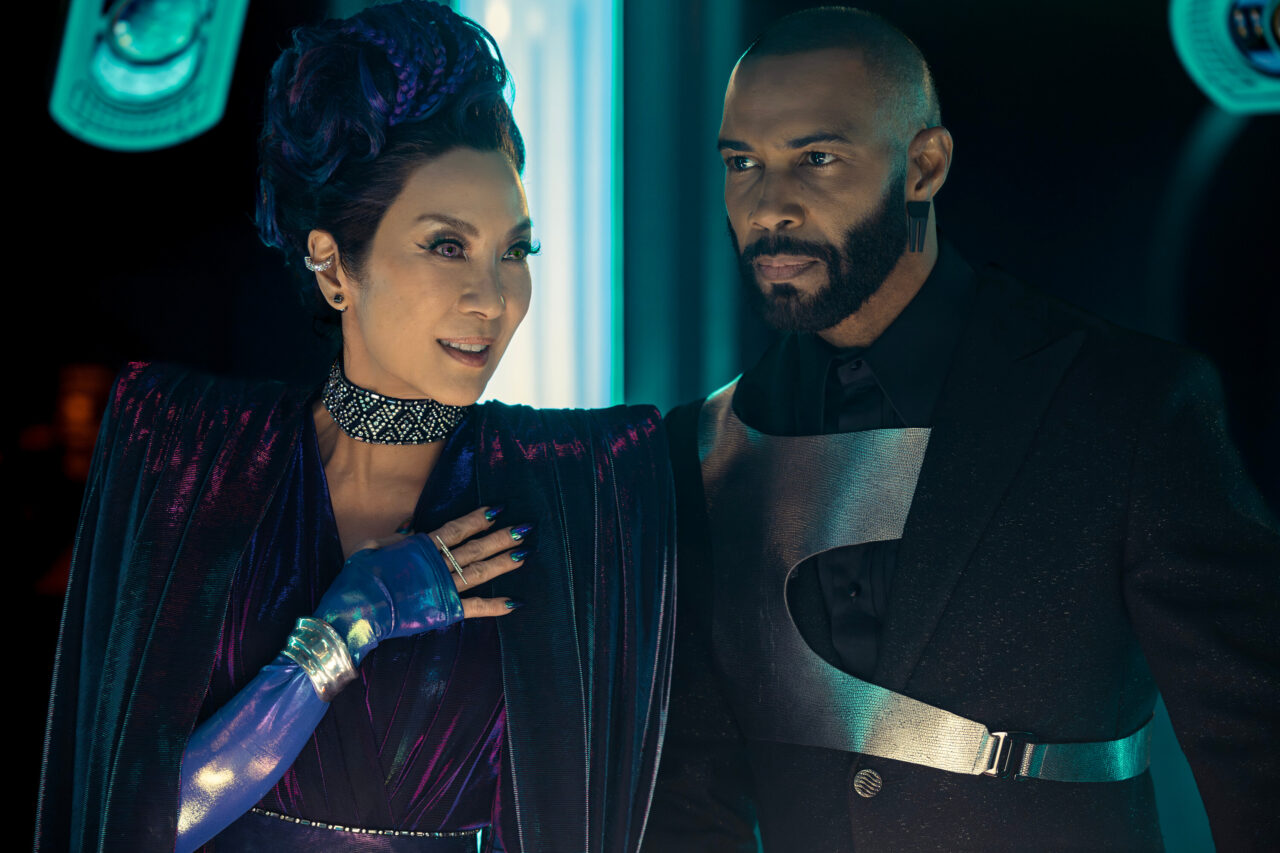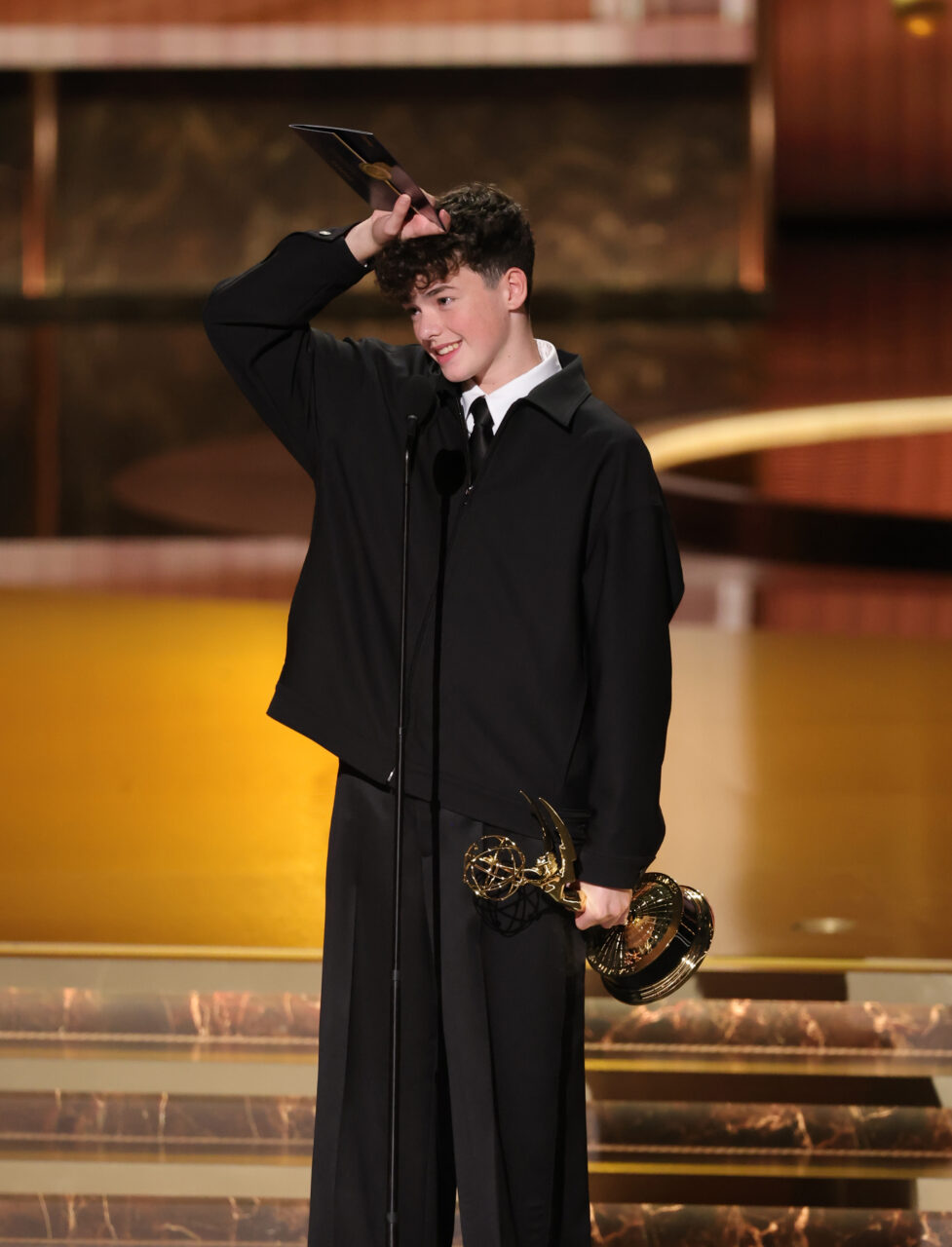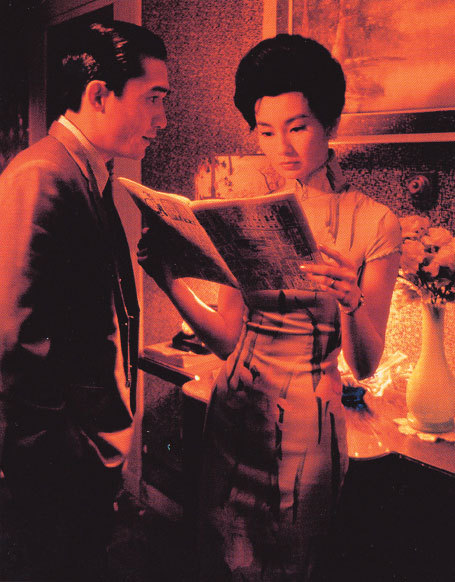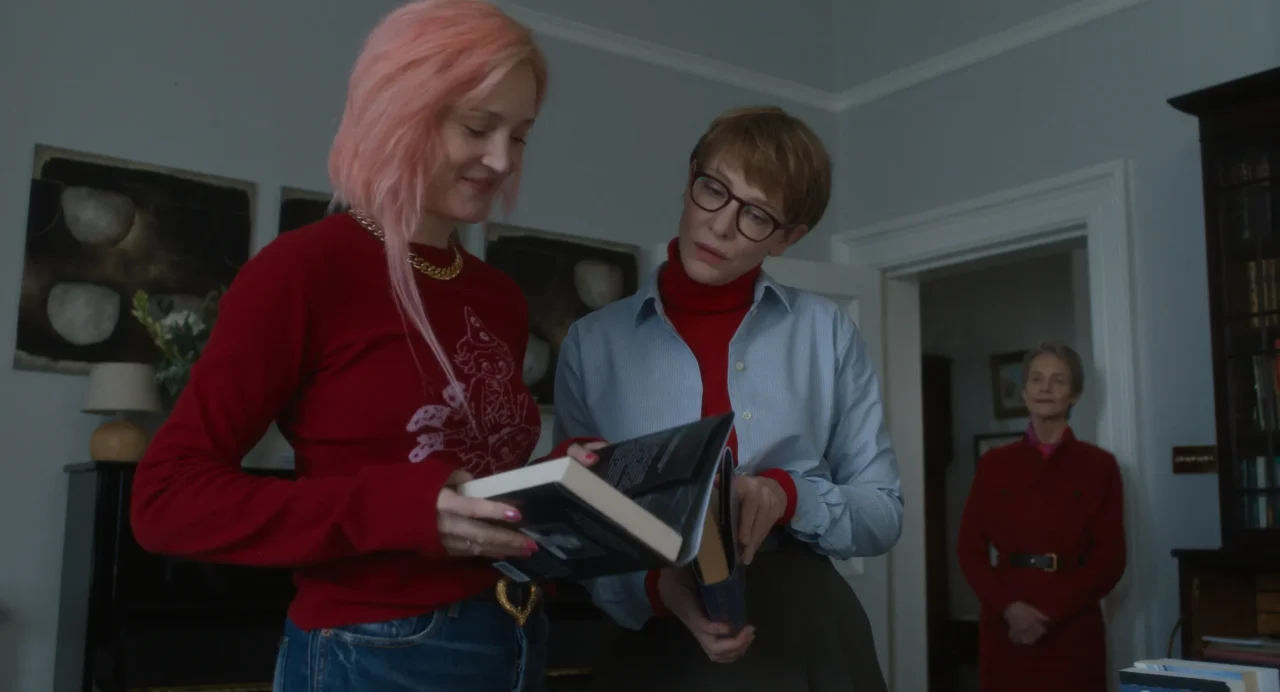Oscar-winning actress Michelle Yeoh makes a stunning return to the sci-fi series Star Trek family. Following her beloved role in Star Trek: Discovery (Season 1), she reprises the legendary Philippa Georgiou in Star Trek: Section 31.
Star Trek: Section 31 stars Michelle Yeoh as Philippa Georgiou, who joins a secret division of Starfleet, bearing the responsibility of safeguarding the United Federation of Planets while simultaneously confronting her past transgressions. In an exclusive interview with Vogue Hong Kong, Michelle shares her profound insights into the complexity of Philippa Georgiou and how the team explores the darker side of humanity. Star Trek: Section 31 is now available on HBO Max.
How does it feel returning to the Star Trek family, and what are your expectations for this new chapter?
Oh, I’m very, very happy that we have finally brought Section 31 to our audience, and I hope that you all will like it very much. It’s wonderful to be able to reprise the role of Philippa Georgiou, a character that I’ve always really enjoyed playing since Star Trek: Discovery, which is quite a few years ago, I think 2018. And I remember very clearly, being the much-beloved Captain Philippa Georgiou, and then she was killed by the Klingons, and then coming back at the end of Season One as the tyrant Emperor Philippa Georgiou. I found this character thoroughly fascinating, complex, and I felt that there was so much fun to be had with her. And I’m very happy that Alex Kurtzman, Tunde, our director for Section 31, also believed in it.
Was there anything about the character of Emperor Philippa Georgiou that resonated with you when you read the script?
Well, this character is a character that we’ve known, I’ve known. So when Craig Sweeney turned in his script after he worked on it for two years, what was most that came out, first of all, was the background. He wanted all of us to know who Philippa Georgiou was. How did she become, and where did she come from? It’s young Miku, this amazing young actress who plays the younger Philippa Georgiou. And it tells you how tragic, but how tough and strong you have to be to be the emperor. So when I read the script, I was blown away by that launch of Section 31. And then Emperor Georgiou, Philippa Georgiou, even though she’s hiding out in plain sight, trying to fit into this new world, not in the mirror universe anymore. She’s glamorous and fun. It’s nice to be able to play a character like that.
How do you convey her depth and complexity on screen?
Well, to start off with, thank you to Craig for writing all the back history for Georgiou. And then of course, with Tunde, our director, I work very closely with him to explore the different levels of humanity, how it comes out or whether it does, because Emperor Georgiou is a lone wolf. And now in Section 31, she’s faced with a bunch of misfits, and can she work with them? And that’s the beauty about working with Star Trek is that we always look for adventures beyond the frontiers, you know. And then also new characters. New and old aliens, aliens that we have already known, but now given more of an opportunity to see them in a different way. So, that’s how the whole story comes together because of a good writer. That’s very important.
What message do you hope the audience will take away from her story?
I hope that you would put your phaser to fun and have a lot of fun because it is murder and mayhem, and with a huge—you would appreciate this, since you are Hong Kong Vogue—fashion flair as well. Because in this, Gersha Phillips, our costume designer, also collaborated with Balenciaga.
Looking back on your amazing career, what sets Georgiou apart from the other characters that you have played before? Why is she so special or significant to you?
Ah, I think every character that I choose to play is special and different. And I think for me, that’s the most important because I need to be challenged. I need to be learning something new as an actor, as a professional. And with Emperor Georgiou, it is a very dark character. And somehow you can find a lot of humour in it. Sometimes you know, we go like, yeah, you’re allowed to laugh at that, you know, she just killed somebody. But that’s storytelling, and I approach all my different characters with that in mind: what is the story you’re trying to tell? We need to be able to tell stories not just with good characters, not just with good people, but also with villains, people with a dark side. To be able to explore that is the ultimate job of an actor.
Filming a sci-fi series like Star Trek must differ greatly from your martial arts films. How do you compare the two, especially in storytelling, action scenes, and character development?
Right. I think the most important thing is that it doesn’t really matter whether it’s a science fiction or a period piece, or a contemporary piece. The fighting is driven by the drama. So what is the drama in Section 31? Why is she doing this fight sequence? Is she trying to save the world? Is she trying to save her own neck? The most important thing is to understand where it’s coming from. And each time what we do, especially like with Chris McGuire and his amazing stunt team, is to ask, what is the story? What is the reason for this action sequence? For example, we’re trying to take this thing back from a very evil person. And in that, how do we make that fight sequence different from the others? Because, if you were in, for example, very easy in Crouching Tiger, Hidden Dragon, we’re running through like rooftops and things like that. The drama is like fighting with swords. So it’s a very particular style of fighting. Here, we still have two arms and two legs, but how do we make it look different? So with Tunde and his props, our props master, Mario, they devised, for example, the phaser that changes your molecules. So then, in that way, it’s a different style of fighting, which makes it more fun and exciting. So, it gives us different platforms to play on as well.
I think with Section 31, it was because it’s a character that I really enjoyed playing so much since Star Trek: Discovery, the TV series that I did with Sonequa Martin-Green. With Section 31, but how do we make it different? Because, you know, with the costumes, for example, Gersha Phillips, you know, with how it looks very, very different from the more leather-driven Section 31 when it was in Star Trek: Discovery. So every single time, I think, what we tried to do is, how can we be different? How can we evolve? How can we make it so that you are on a different adventure with us? I think it’s very important for our fans who have loved, especially the Star Trek family, for so many years, so that they can move with us and go like, “oh wow! I like, I enjoy that!”, you know, and give us the strength and liberty to explore and play with different things.
What was the biggest challenge when filming Star Trek: Section 31?
Well, no, I think, it’s not so much about that. It’s challenging because that’s why you’re doing it. And the most important thing that you are learning, every day when you step on the set, you hope that your director or your fellow cast members. Everyone around you has brought something different and brought their A-game to it. And so you are able to learn and grow as a person and as an actor.
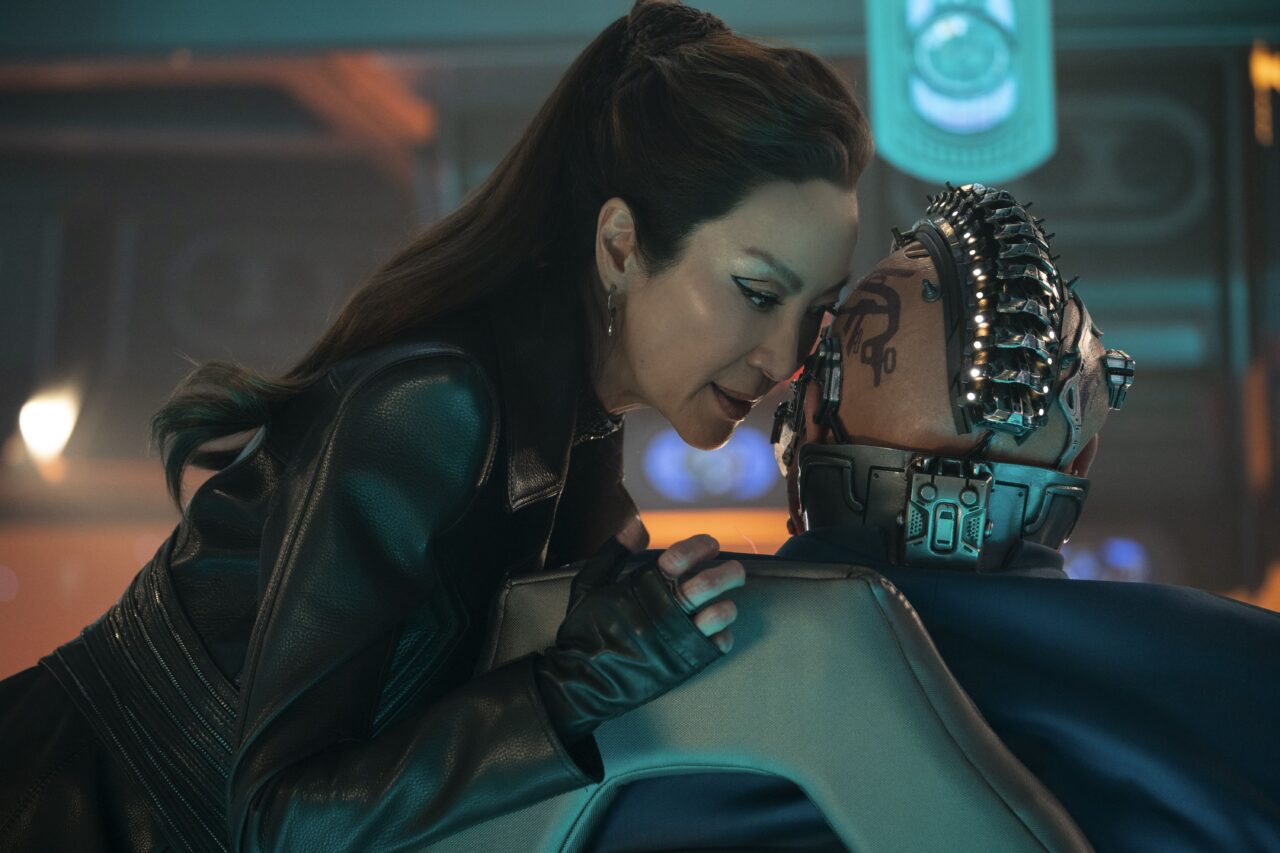
Michelle Yeoh as Georgiou and Joe Pingue as Dada Noe in Star Trek: Section 31, streaming on HBO Max in 2025
Photo: Jan Thijs/Paramount+
As filming technologies like CGI are evolving rapidly, how do you adjust your performance, particularly when your character interacts with elements that aren’t physically present, like in Star Trek?
Well, you find your way. For me, this time in particular, in Section 31, I walked into what we call ‘the wall’. The wall is like a whole wall of cameras where they create the illusion of the entire set. And that was the most amazing feeling because it was like I walked into the Baram, my nightclub. I thought, “How the hell did they build this set?” And as you go in closer, you realise, “Oh my, it’s ‘the wall’!” So technology does help in many ways to create an environment and now more real than before, rather than just being CG. And they say, “Oh, look right”. And you go, “What am I looking at? I’m not sure.” But there is a big thing coming at you. So it’s different. As an actor, it’s nicer when you have a real, organic feel of the set and the costumes because there are already so many emotions and things that you are imagining beyond the green screen. It gets a little convoluted.
How do you feel about the shift towards streaming platforms for major film releases, particularly for a franchise like Star Trek?
Well, this has been happening, right, the last few years. And I think the one interesting thing is it gives a lot more movies, a lot more stories that sometimes get lost along the way to be actually seen. So you know, streaming has allowed more and more visibility to some amazing projects. But still, I’m old school. I like to go to the cinema.
Do you think the evolution of streaming platforms will encourage the diversity of content or the creativity in the industry?
I think what it does is it gives, it opens more doors. And that’s what we hope, that’s what it does for us as storytellers, that there are more options, you know, to be able to showcase and to show your stories to a wider audience.
Can you tell us what you love most or enjoy most about the movie? What aspects would you like us to focus on?
With Section 31, I think you should turn your phaser on and have fun with it because it’s murder and mayhem but with fashion flair and humour, so you have to sit back and enjoy.
Editor
Bonnie YauCredit
Lead Image: Jan Thijs/Paramount+